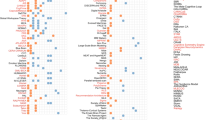Abstract
Analogy is the cognitive process of matching the characterizing features of two different items. This may enable reuse of knowledge across domains, which can help to solve problems. Indeed, abstracting the ‘role’ of the features away from their specific embodiment in the single items is fundamental to recognize the possibility of an analogical mapping between them. The analogical reasoning process consists of five steps: retrieval, mapping, evaluation, abstraction and re-representation. This paper proposes two forms of an operator that includes all these elements, providing more power and flexibility than existing systems. In particular, the Roles Mapper leverages the presence of identical descriptors in the two domains, while the Roles Argumentation-based Mapper removes also this limitation. For generality and compliance with other reasoning operators in a multi-strategy inference setting, they exploit a simple formalism based on First-Order Logic and do not require any background knowledge or meta-knowledge. Applied to the most critical classical examples in the literature, they proved to be able to find insightful analogies.
Similar content being viewed by others
Notes
E.g. (Gentner 1998): structural soundness holds if the alignment and the projected inference are structurally consistent; factual validity is needed to check if the projected inference preserves truth (i.e. it does not violate any constraint), which is not ensured because analogy is not a deductive mechanism (but just a hypothesis) —note that factual correctness is not guaranteed by structural consistency; relevance for current goal holds if and only if the produced inference moves the knowledge towards the goal, making structural consistency and factual validity just preconditions.
Walter Crane’s version, in Baby’s Own Aesop, 1887 (https://en.wikipedia.org/wiki/The_Fox_and_the_Grapes).
An example of this situation is the classical Solar system/Rutherford atom problem, that will be shown in the following.
An extension determines which arguments are reliable in an argumentation framework. Some extensions are tighter, some others are looser in selecting ‘reliable’ arguments.
References
de los Angeles, C.M., & Forbus, K.D. (2012). Using quantitative information to improve analogical matching between sketches.
Baydin, A.G., de Mántaras, R.L., & Ontañón, S. (2012). Automated generation of cross-domain analogies via evolutionary computation. CoRR abs/1204.2335.
Doumas, L.A.A., Hummel, J.E., & Sandhofer, C.M. (2008). A theory of the discovery and predication of relational concepts. Psychological Review, 115(1), 1–43.
Dung, P.M. (1995). On the acceptability of arguments and its fundamental role in nonmonotonic reasoning, logic programming and n-person games. Artificial Intelligence, 77, 321–357.
Egly, U., Gaggl, S.A., & Woltran, S. (2010). Answer-set programming encodings for argumentation frameworks. Argument &, Computation, 1(2), 147–177.
Falkenhainer, B., Forbus, K.D., & Gentner, D. (1989). The structure-mapping engine: Algorithm and examples. Artificial Intelligence, 41, 1–63.
Ferilli, S., Basile, T., Biba, M., Mauro, N.D., & Esposito, F. (2009). A general similarity framework for horn clause logic. Fundamenta Informaticae, 90(1–2), 43–66.
Gentner, D. (1983). Structure-mapping: a theoretical framework for analogy. Cognitive Science, 7(2), 155–170.
Gentner, D. (1998). Analogy. A companion to cognitive science (pp. 107–113).
Gentner, D., & Markman, A.B. (1997). Structure mapping in analogy and similarity. American psychologist, 52, 45–56.
Gick, M.L., & Holyoak, K.J. (1980). Analogical problem solving. Cognitive Psychology, 12(3), 306– 355.
Giordana, A., Saitta, L., & Roverso, D. (1991). Abstracting concepts with inverse resolution. In L. Birnbaum & G. Collins (Eds.) ML, Morgan Kaufmann (pp. 142–146).
Halford, G.S., Wilson, W.H., Guo, J., Gayler, R.W., Wiles, J., & Stewart, J. (1994). Connectionist implications for processing capacity limitations in analogies. Advances in Connectionist and Neural Computation Theory, 2(1-2), 363–415.
Hofstadter, D.R., & Mitchell, M. (1994). The copycat project: A model of mental fluidity and analogymaking. In Advances in connectionist and neural computation theory. Norwood, N.J.: Ablex Publishing Corporation.
Holyoak, K.J., & Hummel, J.E. Dedre Gentner, K.J.H., & Konikov, B.N. (Eds.) (2001). Understanding analogy within a biological symbol system. Cambridge, MA: The MIT Press.
Holyoak, K.J., & Thagard, P. (1989). Analogical mapping by constraint satisfaction. Cognitive Science, 13, 295–355.
Leuzzi, F., & Ferilli, S. (2013). Reasoning by analogy using past experiences. In Proceedings of the 28th italian conference on computational logic (CILC 2013), CEUR-WS.org (Vol. 1068, pp. 115–129).
Leuzzi, F., & Ferilli, S. (2016). New Frontiers in Mining Complex Patterns: 4th International Workshop, NFMCP 2015, Held in Conjunction with ECML-PKDD 2015, Porto, Portugal, September 7, 2015, Revised Selected Papers, Springer International Publishing, Cham, chap Generalizing Patterns for Cross-Domain Analogy, pp. 147–162.
Lloyd, J.W. (1987). Foundations of logic programming, 2nd Edn. Springer.
Lu, H., Chen, D., & Holyoak, K.J. (2012). Bayesian analogy with relational tansformations. Psychological Review, 119(3), 617–648.
Michalski, R.S. (1993). Inferential theory of learning: Developing foundations for multistrategy learning. In Machine learning: a multi-strategy approach (Vol. 4, pp. 3–62). Morgan Kaufmann Publishers.
O’Donoghue, D., & Keane, M.T. (2012). A creative analogy machine: Results and challenges. In Proceedings of the 3rd international conference on computational creativity (pp. 17–24). Dublin, Ireland.
Rotella, F., Leuzzi, F., & Ferilli, S. (2015). Learning and exploiting concept networks with connektion. Applied Intelligence, 42(1), 87–111.
Schwering, A., Krumnack, U., Kühnberger, K.U., & Gust, H. (2009). Syntactic principles of heuristic-driven theory projection. Cognitive Systems Research, 10(3), 251–269.
Turney, P.D. (2005). Measuring semantic similarity by latent relational analysis. CoRR abs/cs/0508053.
Turney, P.D. (2008). A uniform approach to analogies, synonyms, antonyms, and associations. CoRR abs/0809.0124.
Veloso, M.M., & Carbonell, J.G. (1993). Derivational analogy in PRODIGY: Automating case acquisition, storage, and utilization (pp. 55–84). US, Boston, MA: Springer.
Wilson, W.H., Halford, G.S., Gray, B., & Phillips, S. (2001). The star-2 model for mapping hierarchically structured analogs. The analogical mind (pp. 125–159).
Author information
Authors and Affiliations
Corresponding author
Rights and permissions
About this article
Cite this article
Leuzzi, F., Ferilli, S. A multi-strategy approach to structural analogy making. J Intell Inf Syst 50, 1–28 (2018). https://doi.org/10.1007/s10844-017-0447-6
Received:
Revised:
Accepted:
Published:
Issue Date:
DOI: https://doi.org/10.1007/s10844-017-0447-6




